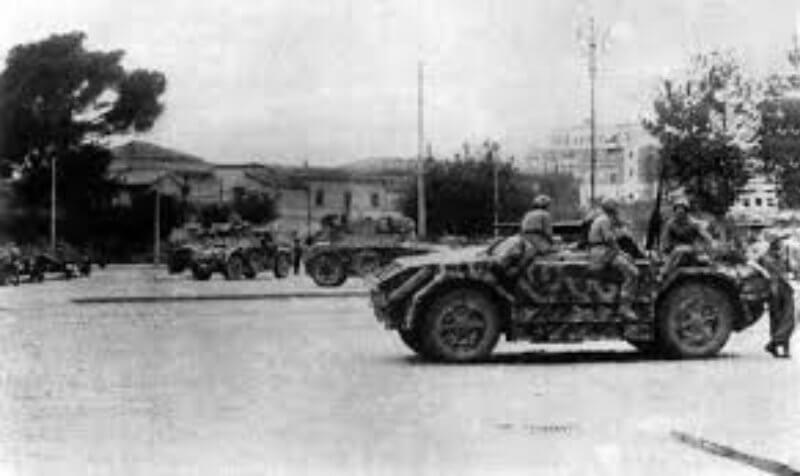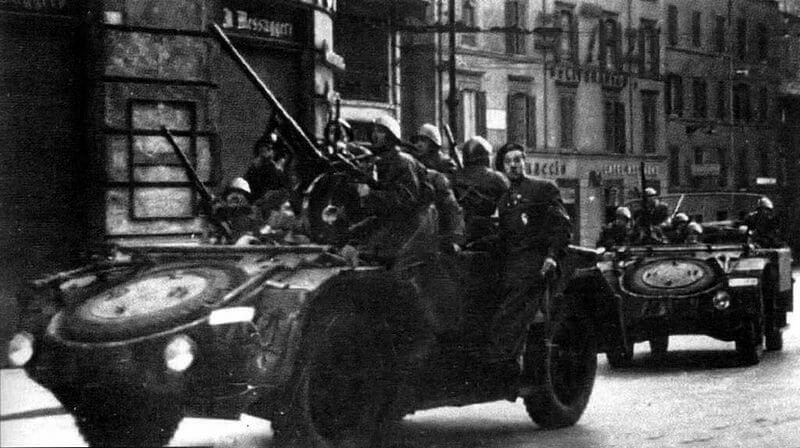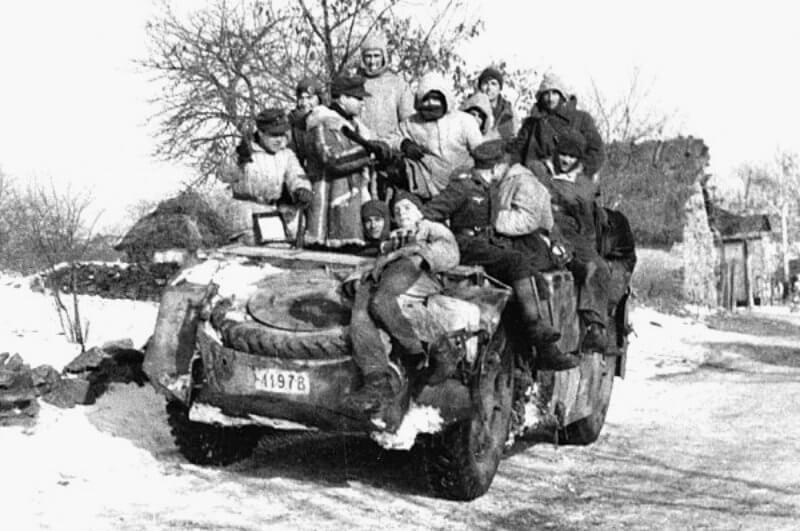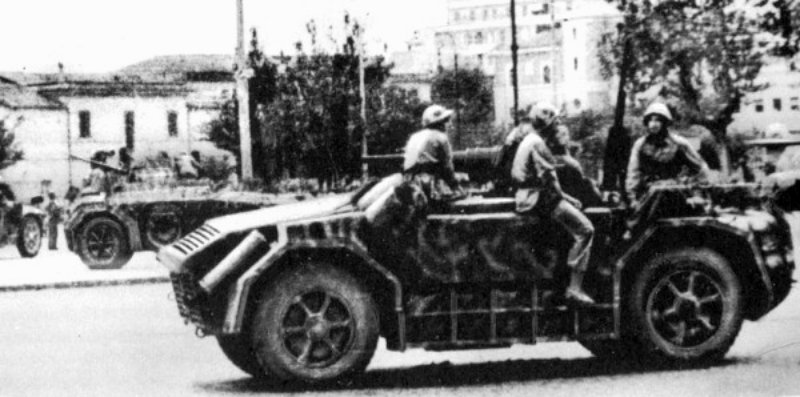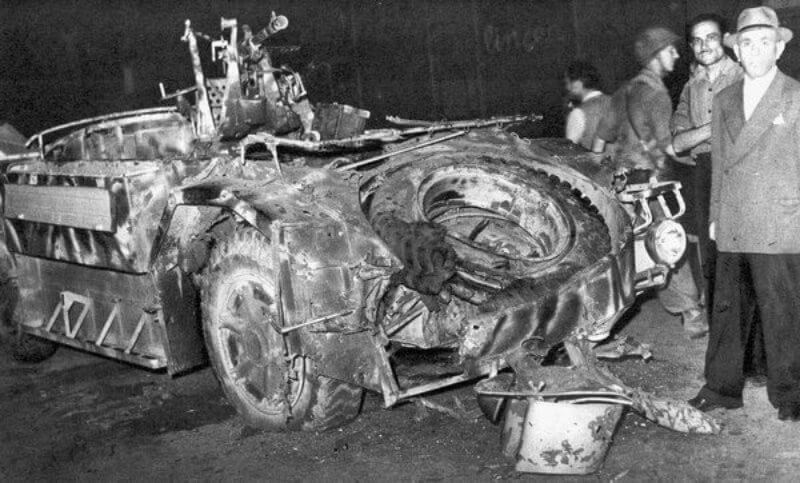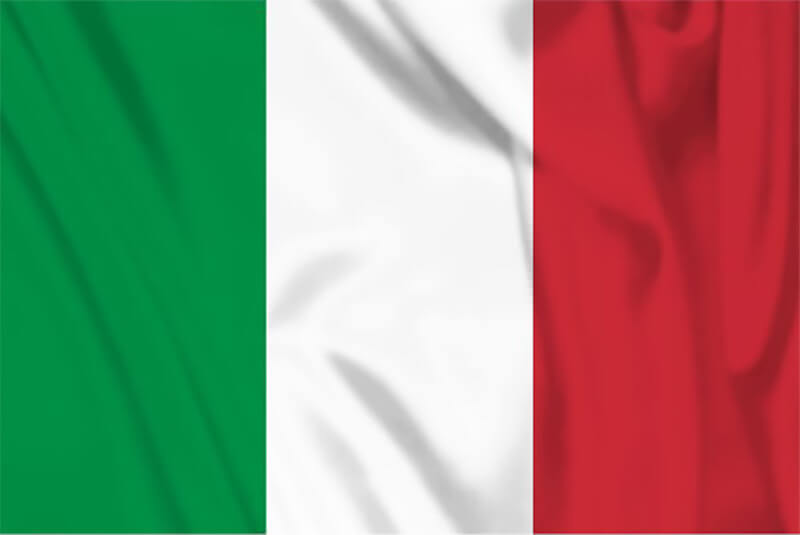| Length |
| 5.62 metres |
| Wide |
| 2.26 metres |
| Height |
| 1.80 metres |
| Weight |
| 4,500 kilograms |
| Weight Loaded |
| 6.500 kilograms |
| Propulsion |
| Fiat SPA ABM 2 6-cylinder, 88 horsepower gasoline engine |
| Range |
| 300 Kilometres 1,500 Kilometres with spare canisters |
| Armour |
| – |
| Armament |
| * One or two 8 millimetres Breda model 37 machine gun. * One 20 millimetres Breda model 35 gun. * One 20 millimetres Solothurn S18/1000 anti-tank rifle. * One 47 millimetres Breda 47/32 gun. |
| History |
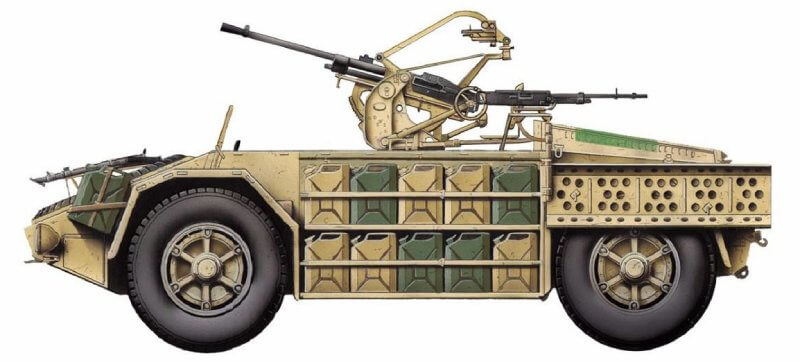 |
In 1942, British and Commonwealth Long Range Desert Groups operates deep behind Axis lines in North Africa, using heavily armed yet unarmoured vehicles to disrupt enemy supply bases and airfields. Their large-scale reconnaissance missions provide critical intelligence to the Allies. Observing this success, the Regio Esercito (Royal Italian Army) seeks to develop a similar unit, drawing on a design proposed by SPA-Viberti the previous year. This project is based on the chassis of the AB41 armoured car, itself derived from the Fiat-SPA TM40 medium artillery tractor.
The AS42 Sahariana emerges as a reconnaissance vehicle. Initially unarmed, pressure from the Royal Italian Army’s high command results in its armament with heavy weaponry. The SPA-Viberti AS42 is rapidly developed in early 1942, with a prototype presented to the army on July 9th, 1942. After successfully passing tests, production begins at the SPA-Viberti factory in Turin by August 1942.
From September to November 1942, the Royal Italian Army receives the first batch of 14 AS42 vehicles. A bombing raid on the SPA-Viberti factory in Turin during the preceding weeks delays production and destroys several AS42s.
In 1943, a second model, the ‘Sahariana II’ or ‘Type II’, more commonly known as the ‘Metropolitana’, enters service in Italy. This variant lacks the two upper rows of petrol tanks, replacing them with large ammunition boxes. The remaining 14 jerry cans (4 for water and 10 for fuel) reduce the vehicle’s maximum range to approximately 1,300 kilometres. As long-range desert operations are unnecessary in Italy, these jerry cans are seldom carried to mitigate the risks of transporting fuel in urban combat.
The perforated plates for unbogging the vehicle are removed, and two large toolboxes are installed on the rear fenders. The Metropolitana is fitted with 11.5×24″ Pirelli “Artiglio”, “Sigillo Verde”, and “Raiflex” tyres, optimised for continental terrain and temperate climates. Unlike the Sahariana, the Metropolitana is not equipped with Solothurn S18/1000 anti-tank rifles and instead carries 47 millimetres and Breda 20 millimetres rapid-fire anti-tank guns.
| Technical Details |
The AB41 chassis remains largely unchanged, but the armoured hull undergoes a complete redesign, transforming the vehicle’s profile to resemble a car. The sloped front houses a large spare wheel and various tools. Two shovels are mounted on the left side of the front bonnet, while a pickaxe is fixed to the left rear side. The fenders are redesigned; the front fenders hold machine gun tripods and two jerry cans on each side for drinking water, marked with white crosses. The rear fenders feature toolboxes and two perforated metal plates for extracting the vehicle from sand. A muffler is installed on the rear right fender, and a brake light plate is mounted on the left.
The open central fighting compartment, measuring 3.2 metres in length and 1.75 metres in width, features 17 mm of armour surrounding the hull. The windscreen comprises three panels of 12 mm-thick bulletproof glass derived from aircraft glass. Despite their thickness, these panels offer less protection than steel equivalents. The windscreen, equipped with rear-view mirrors, can be folded down. The ground clearance measures 0.35 metres, and the vehicle can ford water up to 0.7 metres deep.
The AS42’s total weight is reduced from the AB41’s 7.5 tonnes to 4 tonnes when empty. Fully armed and fuelled, the combat-ready weight reaches 6.5 tonnes. The vehicle retains 4×4 traction, with steering confined to the front wheels. The rear driving position, characteristic of the AB series, is omitted.
Tyres for the AS42 are manufactured by Pirelli in Milan, as are most Italian military vehicle tyres. The vehicle utilises the same Pirelli “Libia” 9.75×24” and “Libia Rinforzato” models as the AB series, suited for North African sand. For operations in Italy and Europe, “Artiglio” 9×24” and “Artiglio a Sezione Maggiorata” 11.25×24” tyres are employed, with newer “Sigillo Verde” and “Raiflex” models developed in 1942. Due to supply chain difficulties, vehicles frequently operate with any available tyres, resulting in irregular combinations such as AB41 or AB43 vehicles fitted with “Raiflex” tyres and AS42 vehicles sporting “Libia” tyres.
The AS42 can carry 20 fuel drums, each with a 20-litre capacity, arranged in two rows of five on either side of the fighting compartment. This allows for a total of 24 drums, including four for water. In North Africa, additional fuel drums are often strapped to any available space to extend operational range. The vehicle is equipped with a tarpaulin for protection against the elements, covering the top and rear but leaving the sides exposed. Smaller tarpaulins cover the windscreen and front lights when not in use, stored with the folding support rods at the rear of the fighting compartment.
A 145-litre fuel tank provides a standard range of 535 km, increasing to 2,000 km with the additional 400 litres of fuel carried in jerry cans. The AS42 consumes approximately one litre of petrol per 3.7 km. The rear engine compartment, protected by 5 mm of armour, houses a 430 kg FIAT-SPA ABM 2 6-cylinder petrol engine, identical to the AB41, producing 88 hp. This engine enables a maximum speed of 84 km/h on roads and 50 km/h off-road.
The fuel tank sits above the engine, while the 3-litre oil tank is positioned to the left. Two water tanks rest above the engine, with another installed in the wooden bulkhead separating the engine from the fighting compartment. The engine cooling system includes a 32-litre water tank.
The spacious open fighting compartment accommodates heavy armament. Depending on the weapon, a specific pedestal is installed, capable of mounting various armaments, including a Breda 20/65 Model 1935 rapid-fire anti-aircraft/anti-tank gun, a 47/32 Model 1935 anti-tank/infantry gun, or a Solothurn S18-1000 20 mm anti-tank rifle, known as the “S” Carbine by Italian forces.
Secondary armament consists of Breda 38 or Breda 37 8×59 mm machine guns. Typically, one to three machine guns are mounted on the vehicle’s sides and rear. Captured British Vickers K machine guns are also frequently used. All main and secondary weapons feature 360° rotation.
Ammunition is stored in its original boxes scattered throughout the fighting compartment due to the absence of dedicated racks. As a result, the ammunition load varies by mission. Besides the driver, the weapon operators sit on folding seats in the fighting compartment, with two on the right and one on the left. In certain cases, crews expand to five or six personnel, squeezing into the compact interior of the AS42.
| Operational Use |
Upon arrival in North Africa, the AS42’s are deployed for desert raids. Their low profile allows them to hide behind dunes, ambushing enemy forces. The extended range enables prolonged pursuits and effective engagements with the Long Range Desert Group. Entering service in December 1942, the AS42s participate in the final stages of the Libyan campaign and the entire Tunisian campaign. They are assigned to Auto-Avio-Saharan Battalions and the 103° Battaglione and Raggruppamento Sahariano. These units are dispersed across various locations: the 1st Company at Marada, the 2nd at Murzuk, the 3rd at Sebha and Hon, while the 4th and 5th confront the Long Range Desert Groups near the Siwa Oasis and French forces under Philippe Leclerc in Chad.
The AS42’s achieve an estimated enemy casualty ratio of 1:5, capturing numerous British vehicles. In 1943, LRDG command issues orders to avoid engagements in areas with significant AS42 presence, necessitating aerial reconnaissance and reducing Long Range Desert Groups effectiveness. During the Tunisian campaign, all Auto-Avio-Saharan Battalion vehicles and most of the Arditi are lost in combat. The Arditi, an elite Royal Italian Army unit entrusted with the AS42s, resist Allied forces until encirclement.
On April 26th, 1942, the 10° Reggimento Arditi is formed, divided into three companies composed of soldiers drawn from sapper, paratrooper, and swimmer units. These troops are transferred for their driving expertise. Each company operates 24 AS42s, organised into four patrol groups with two officers and 18 or more soldiers armed with Carcano Mod. 91 TS rifles, MAB 38A submachine guns, Beretta M1934 pistols, and daggers.
Following April 1943, the companies deploy to Sicily for anti-paratrooper patrols. On 13-14 July, the 2nd Company repels British paratroopers. On 14 July at Primosole, six AS42s engage British forces at the Simeto River’s Primosole Bridge. Poor visibility prevents the use of onboard weapons, resulting in a firefight with personal arms. Four AS42s are destroyed by mortar fire, but 32 Arditi fight alongside German paratroopers for eight days. Surviving vehicles and crews withdraw to the Italian mainland, regrouping at Santa Severa near Rome.
On September 8th, 1943, the day of the armistice, the companies refrain from combat. The I Battaglione aligns with the Allies, forming the 9° Reparto d’Assalto. The II Battaglione joins the Republic of Salò, integrating into the 3ª Divisione Fanteria di Marina “San Marco” as infantry. During the defence of Rome (8-10 September), captured vehicles equip Arditi units that side with German forces, forming the Gruppo Italiano Arditi Camionettisti, which serves with the 2. Fallschirmjäger-Division “Ramcke” on the Eastern Front. These vehicles endure harsh conditions on the Russian steppes, with temperatures as low as -25°C. Some Arditi join partisans, others align with the co-belligerent Italian army or return home.
By spring 1944, the Arditi with the “Ramcke” Division retreat to Germany, later facing Allied forces in Normandy. Some are captured at Brest, while others fight in Belgium and the Netherlands, including at Arnhem during Operation Market Garden. In autumn 1944, survivors return to Italy, joining the Republic of Salò’s Esercito Nazionale Repubblicano.
The Polizia dell’Africa Italiana acquires AS42s for colonial security. In 1943, following the loss of Italian colonies, the PAI uses AS42s for urban patrols. On March 23rd, 1944, during the defence of Rome, Polizia dell’Africa vehicles patrol Via Rasella. On June 4th, 1944, during the Allied advance on Rome, a Polizia dell’Africa AS42 encounters an M4 Sherman, resulting in its destruction by a 75 millimetres shell.
Post-armistice, the Polizia dell’Africa hands over 12 AS42’s to the State Police, which repaint them in amaranth red. The Xª Flottiglia MAS’ Battaglione “Barbarigo” operates around 20 AS42’s in defence of Nettuno, inflicting significant losses on advancing Allied forces. Two AS42 Metropolitanes are built in Turin for factory defence. One participates in a partisan parade on May 5th, 1945.
Seven surviving AS42’s continue in police service until 1954, supporting operations in Emilia Romagna. Additional AS42’s are delivered to the police in January 1946.
| Multimedia |
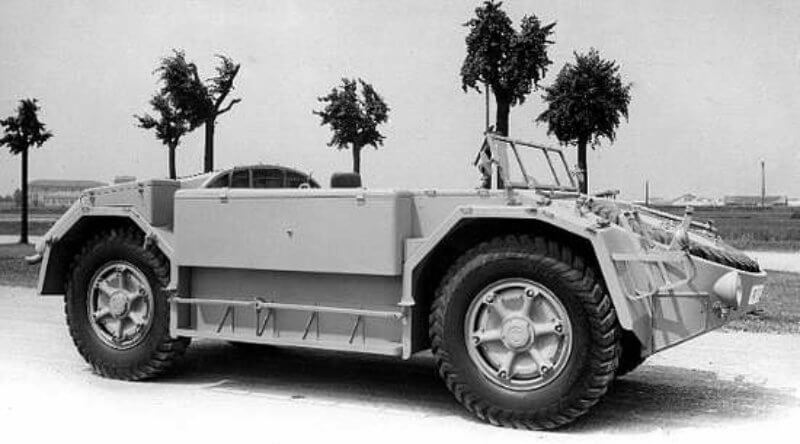
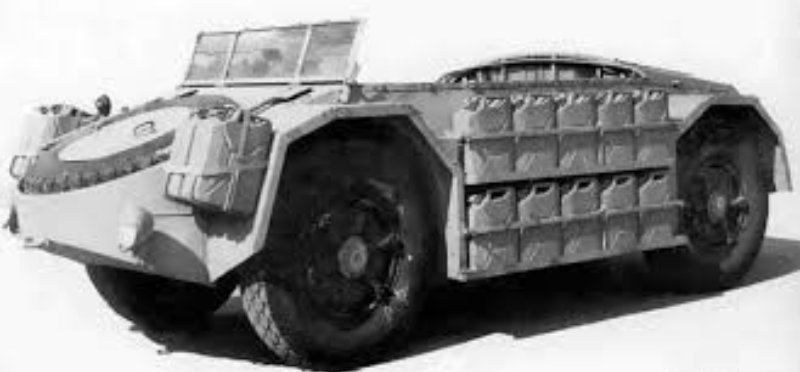
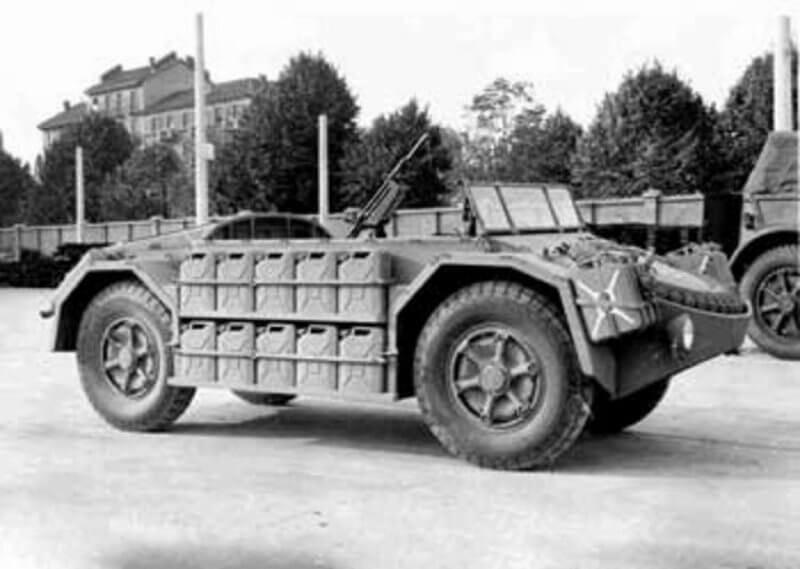
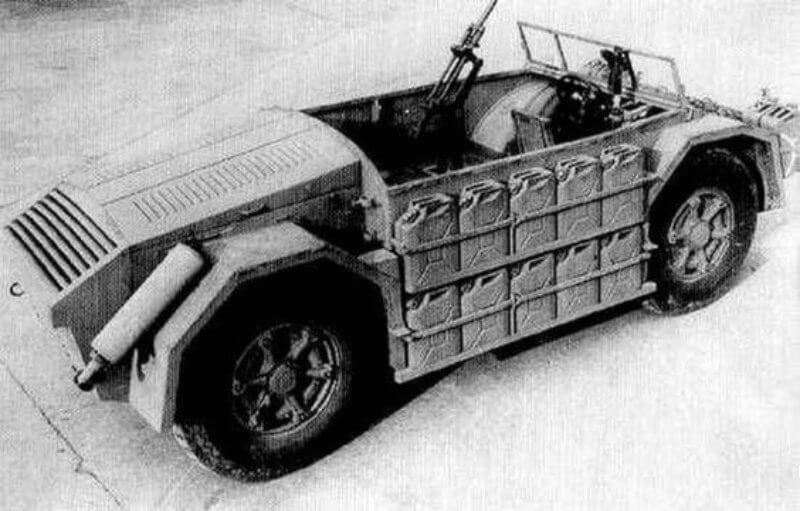
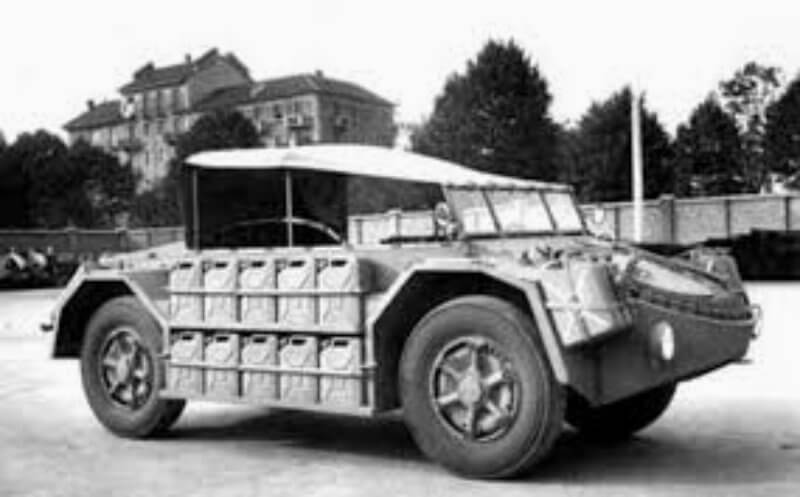
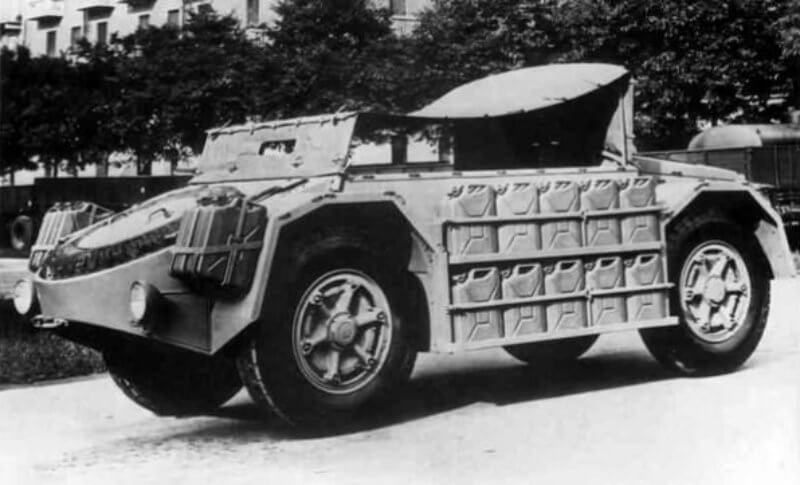
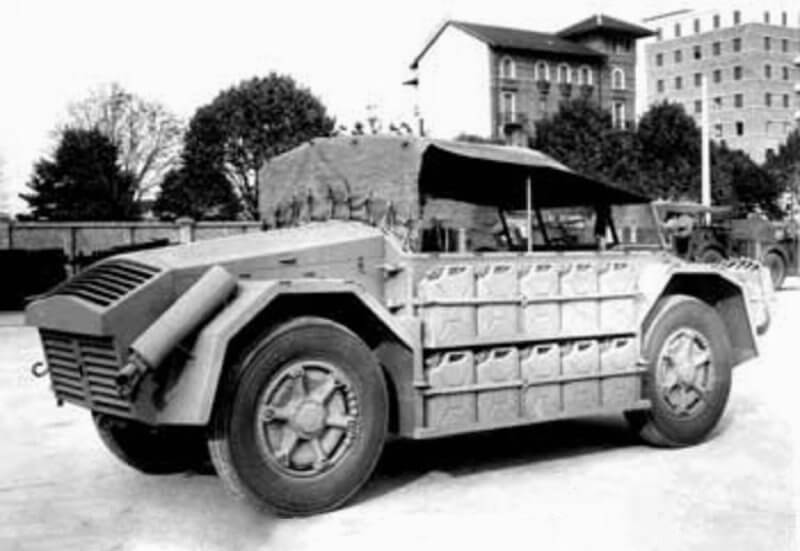
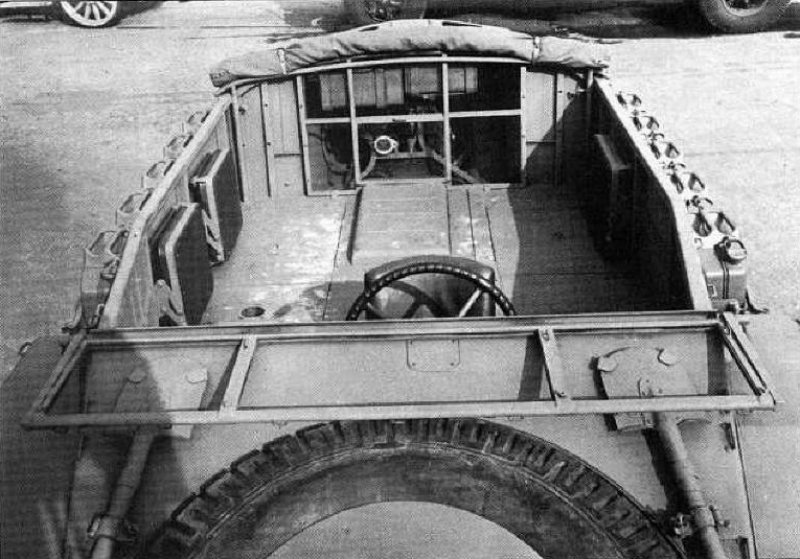
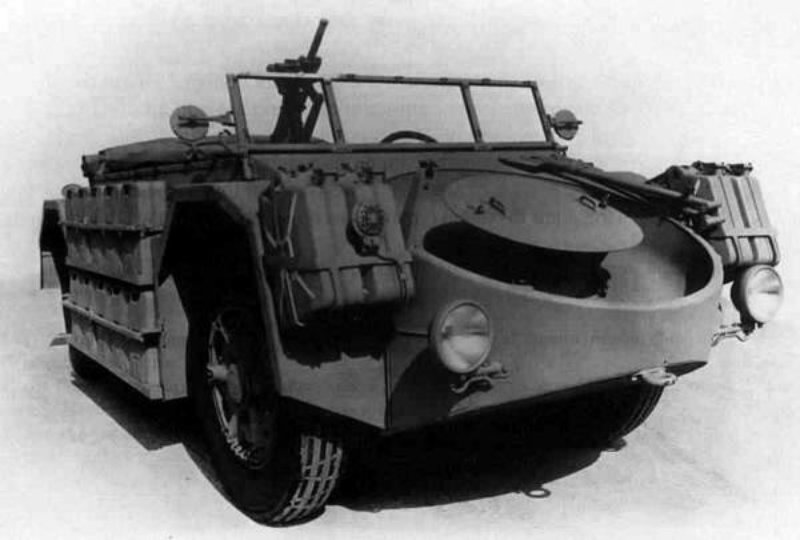
| SPA-Viberti AS42 Sahariana |
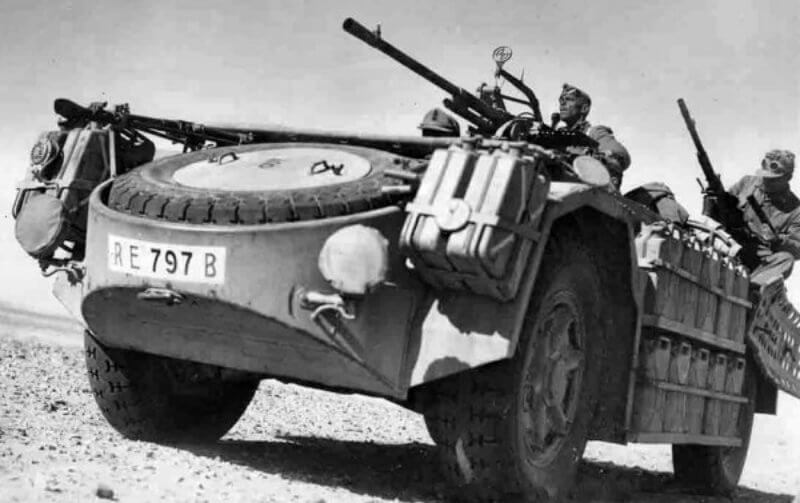
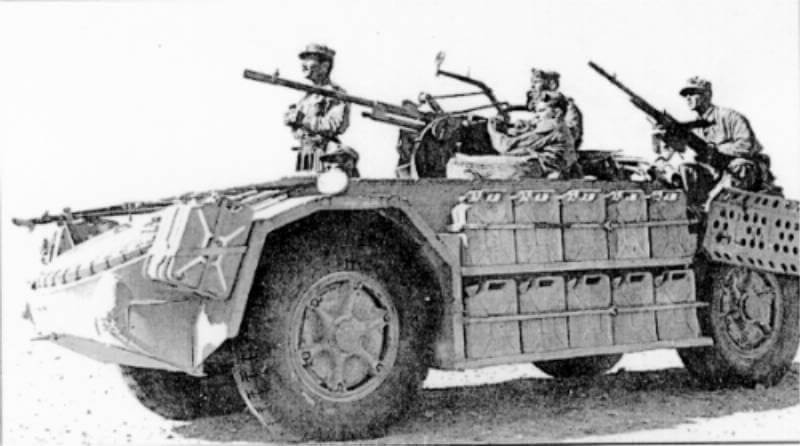
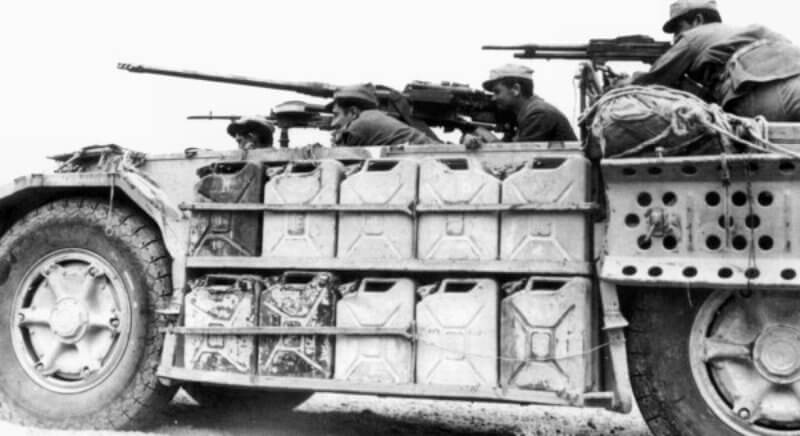
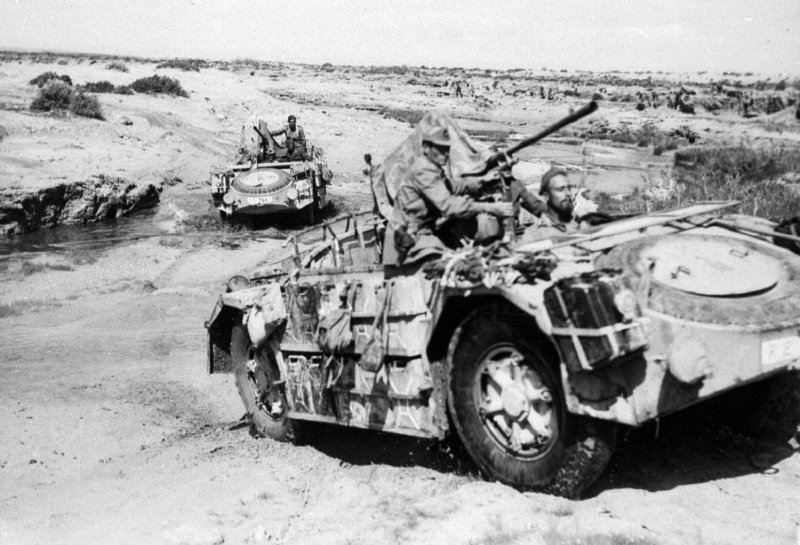
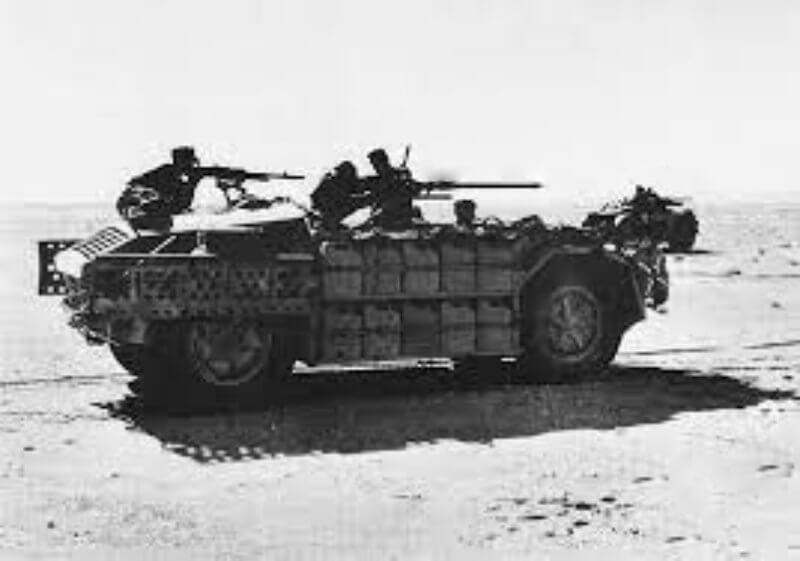

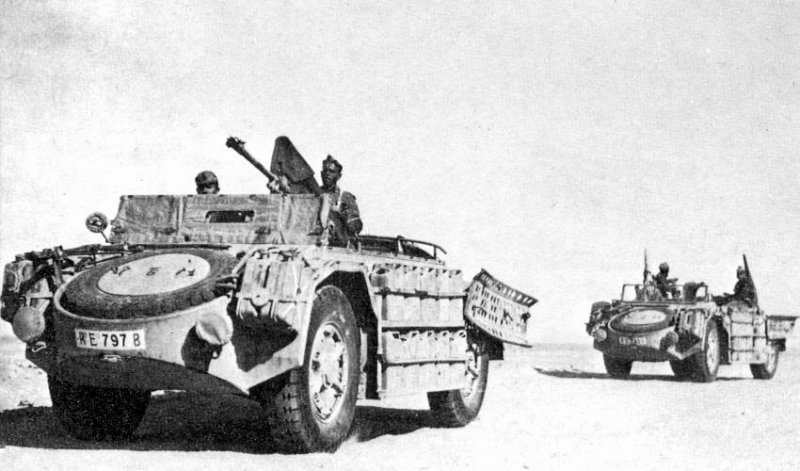
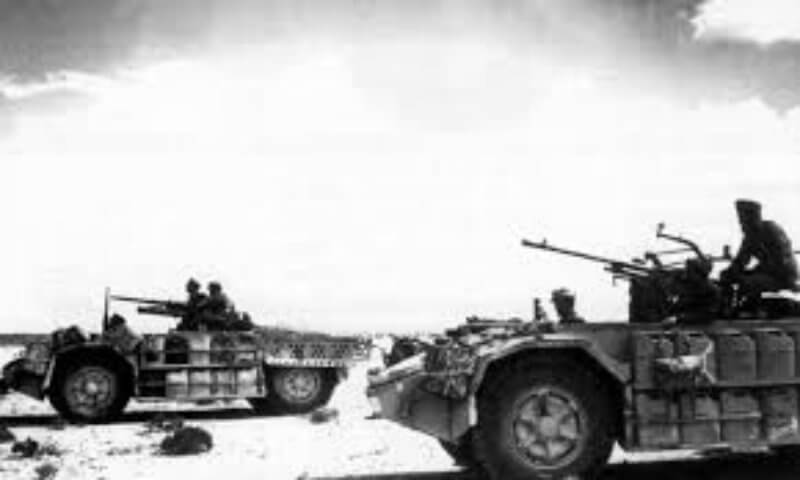
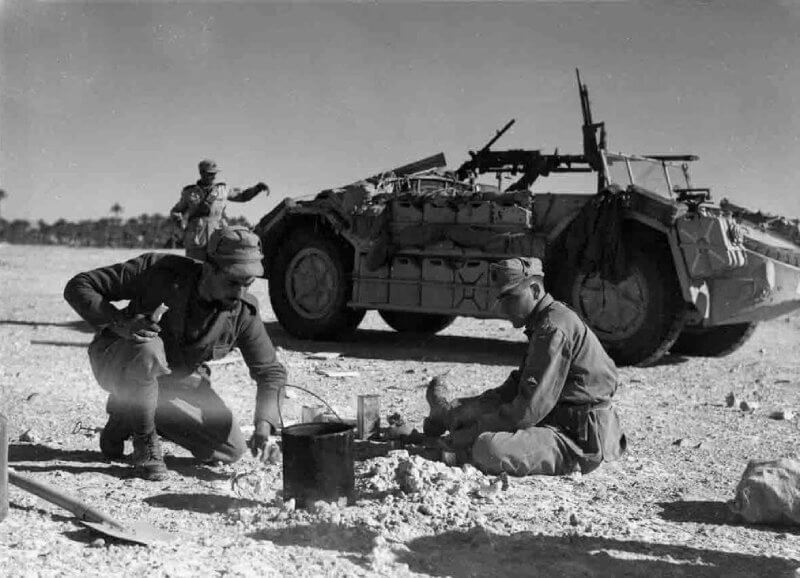
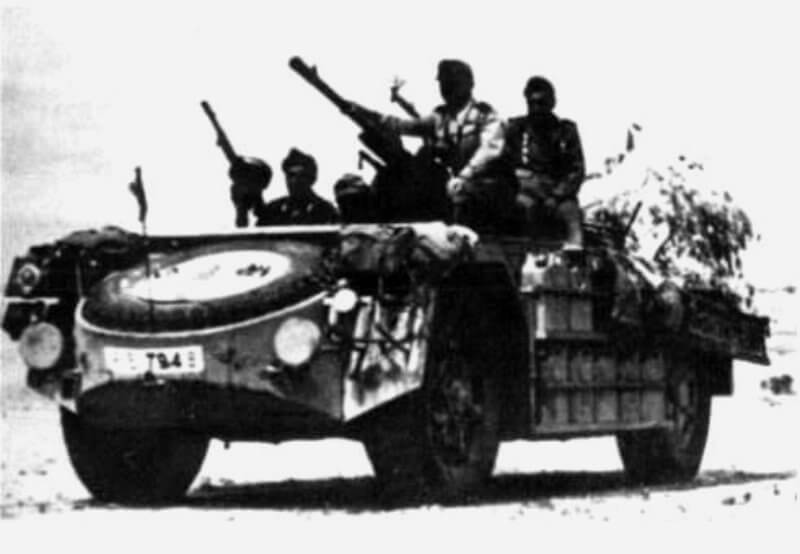
| SPA-Viberti AS42 Metropolitana |



